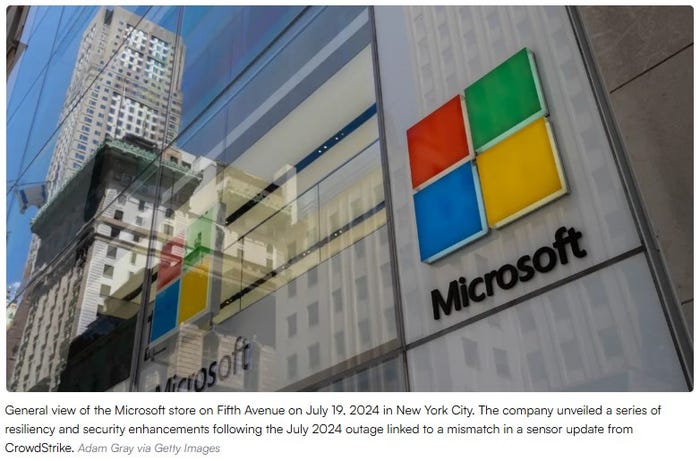Rugged device offers multiple tools
Mobile communications solutions provider Z5 Technologies introduced the Nomad-1800, the latest addition to the company's series of rugged, command-and-control
January 1, 2007
Mobile communications solutions provider Z5 Technologies introduced the Nomad-1800, the latest addition to the company’s series of rugged, command-and-control portable communications platforms.
Embedded in the Nomad-1800’s ruggedized, watertight, high-impact ABS case are both 802.11b/g and 4.9 GHz technologies, as well as an Inmarsat BGAN satellite terminal (to deliver broadband data and voice) and an EV-DO router, said Z5 President Brendan Reilly.
Not only does the device provide communications for field personnel, it also offers a “telenetwork” capability that can be used to conduct interactive, live conference calls over the telephone using teleconferencing bridges.
When the unit is turned on, it generates a mobile local area network (LAN) that has a range of up to 2 miles, depending on the antenna selection and terrain. Cover decreases to one-half mile in urban areas. However, should another Nomad unit be dropped into the area, users can create an ad hoc mesh.
“You can drop twenty of these and cover a distance of thirty to forty miles,” Reilly said. “We could be in the middle of Afghanistan, and everyone has their own LAN.”
Video-conferencing software embedded into the laptop computer integrated with the Nomad is another feature. Users can hold a video teleconference and stream real-time footage from an incident scene. In addition, the solution comes equipped with handsets and headsets for voice-over-IP telephone calls.
GPS and mapping software can be loaded onto the laptop for standard geospatial maps and GIS imagery, Reilly said. This information can be printed with the color printer or scanned and transmitted using the scanner/fax machine — both are included in the unit.
Encryption technology is not a standard option on the Nomad, Reilly said. Instead, users can upgrade the system to include Harris Corp.’s USS-900 or SecNext 54 application for secure voice, fax and point-to-point file transfer.
The unit currently is being field-tested by first responders. For example, Jefferson Parish, La., has deployed it within its emergency operations centers, Reilly said. The Department of Defense’s Northcom Joint Task Force — which is based at Fort Bliss, Texas, and supports federal law enforcement agencies in the fight against terrorism and narcotics trafficking — also is deploying the solution.
In addition, a Red Cross technical team evaluated the Nomad during Strong Angel III, a disaster-communications field demonstration held in San Diego in August 2006.
According to Steve Cooper, the Red Cross’ senior vice president and chief information officer, key benefits include the solution’s ability to quickly establish communications — in minutes rather than hours — and operate on battery power until permanent communications and power infrastructures can be restored.
Cooper added that in today’s environment, much of the focus is on interoperable communications systems that integrate land mobile radio, traditional telephony and other voice-capable devices with IP data networks, as Nomad does.
“New breeds of collaborative technologies, along with satellite and cellular broadband, will increase the responder’s situational awareness,” he said.
It should be noted that Cooper also sits on Z5’s advisory board. However, to avoid conflicts of interest, Cooper would recuse himself from any Nomad purchasing decisions, according to a Red Cross spokeswoman.
The entire platform, without the encryption upgrade, costs $20,000.
Barcode scanners go wireless
Two vendors recently unveiled hand-held products for the warehouse environment. Hand Held Products unveiled the Dolphin 7600, a mobile device built for barcode data collection, and LXE added the HX2 to its line of hands-free, wearable computers.
The Dolphin 7600 is 12-ounce device developed for light-industrial applications, said Paul Weslake, Hand Held’s product manager of mobility systems. Specifically, it is tailored to those working on receiving docks, in transportation logistics and field services or in a retail environment.
But that’s not all, according to Weslake.
“Can it be used for other applications, such as checking e-mail, sending text messages or doing instant messaging — most certainly it can,” he said.
However, the device was designed with the warehouse in mind, meeting IP-54 standards for blown dust and water intrusion. A standard barcode scanner captures digital images and transmits data using Bluetooth or a wireless personal area network.
An 802.11 b/g wireless local area network (LAN) is optional, Weslake said, adding that the company is working on future products that will incorporate GPS, GSM and other radio technologies. The Bluetooth model costs $1495. The optional 802.11 b/g version costs $1750. It will be available in Q1 2007.
LXE’s HX2 is a 10-ounce data-collection device for scanning barcodes and for picking individual items from warehouse shelves. The device is worn on the arm or waist for hands-free operation, said Mark Dessomes, LXE’s director of marketing.
“It is really for use in a warehouse environment,” Dessomes said. ��“If you need to pick an order, it allows you to free your hands up, picking [products] off racks and putting them into pallets.”
The HX2 wirelessly transmits data from the device to access points placed throughout a warehouse facility.
“It is a wireless LAN, not something you can use over the cellular network,” Dessomes said. “You would have access points connected to a host computer within a warehouse-management system. The access points talk to the WLAN system.”
The HX2 is loaded with a Microsoft Windows CE 5.0 operating system and an 802.11b/g radio with a Bluetooth option. It also meets IP-54 standards for its resistance to dust and water and is housed in a magnesium alloy shell — a bullet-resistant material often used in automotive, industrial, materials-handling, commercial and aerospace equipment.
It also touts an impact-resistant touch-screen that can be viewed from four different angles and offers a voice-enabled option. The HX2 will be available in Q1 2007.
— Mary Rose Roberts



